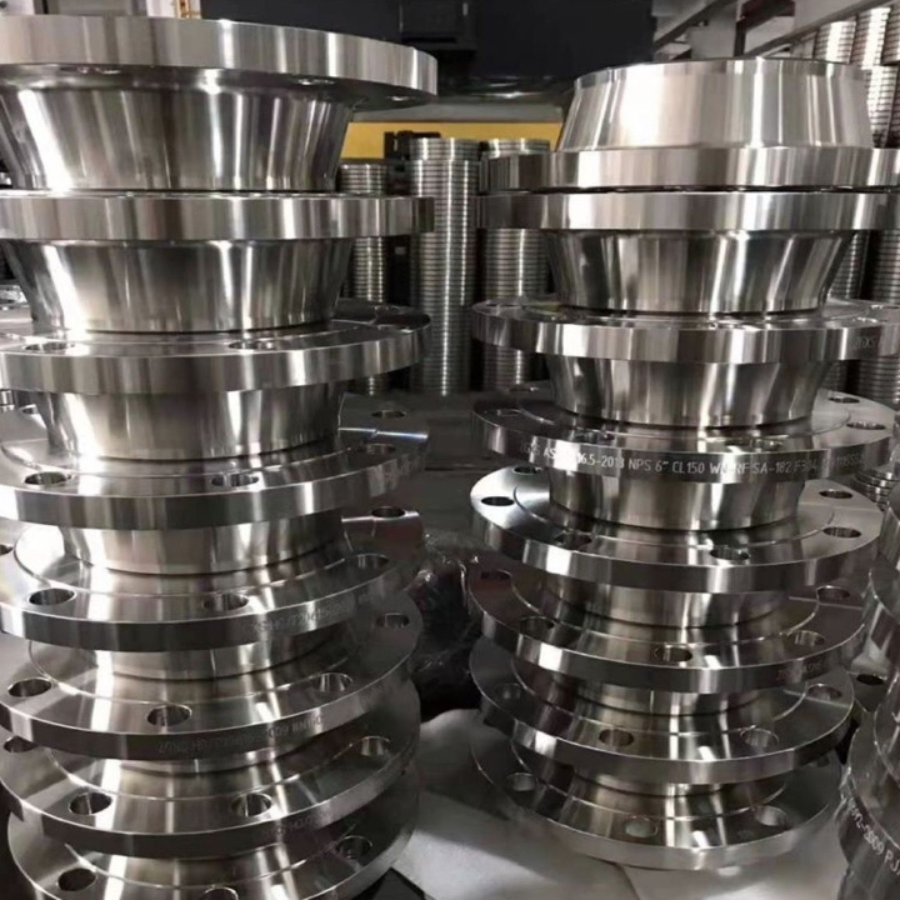Flange is an indispensable accessory for industrial pipelines. Carbon steel flange and stainless steel flange are the two most commonly used materials. So how to distinguish the materials of carbon steel flange and stainless steel flange? Before distinguishing, HEBEI CANGRUN PIPELINE EQUIPMENT CO., LTD. will take you to understand the commonly used manufacturing materials of carbon steel flanges and stainless steel flanges. Commonly used manufacturing materials for carbon steel flanges include 20#, A3, Q235, Q235A, Q235B, A105, etc. Carbon steel flanges account for a large proportion of fluid pipeline construction due to their relatively low manufacturing costs and good mechanical properties and pressure-bearing capacity. Very high. Commonly used manufacturing materials for stainless steel flanges include 304, 304L, 316, 316L, S30408, S30403, S31608, S31603, TP321, 06Cr19Ni10, 00Cr17Ni14Mo2, 1Cr18Ni9Ti, 06Cr17Ni12Mo2, 022Cr17Ni12Mo2, etc. As you can see from the name of the stainless steel material, stainless steel contains Chemical components such as Cr chromium and Ni nickel, with these components, stainless steel will not rust.
The following introduces how to distinguish the materials of carbon steel flanges and stainless steel flanges:
The first method is to look at it with the naked eye. The colors of carbon steel flanges and stainless steel flanges are more obvious. The surface of the stainless steel flange is smoother, while the surface of the carbon steel flange is generally rougher. If possible, take two pieces of different materials. Compared with Lan, it is obvious.
The second method is the dripping rust method. If the surface of the carbon steel flange is not galvanized or painted with anti-rust paint, wipe the oil on the surface of the flange clean, and then drip water onto the flange. If it is a carbon steel flange, Generally, there will be obvious yellow-brown rust in a few hours. If it is a stainless steel flange, only watermarks will be left and no rust will occur.
The third method is the liquid inspection method. The stainless steel liquid reagent is only applicable to stainless steel flanges. You can determine which material it is based on its color change and the time it takes to produce a discoloration effect.
The fourth method is the direct reading spectrometer. The method often used by flange manufacturers is the spectrometer. It can accurately detect the material of the flange, but it is still relatively expensive and has not been fully popularized.
The above is the commonly used method of distinguishing carbon steel flanges and stainless steel flanges. The difference between carbon steel flanges and stainless steel flanges lies in their anti-rust and anti-corrosion capabilities. The anti-rust and anti-corrosion effects of stainless steel are stronger than those of carbon steel, but the carbon steel method The cost of flange is lower than that of stainless steel flange, so you can choose it according to the actual needs of the project.
Post time: Oct-13-2023

